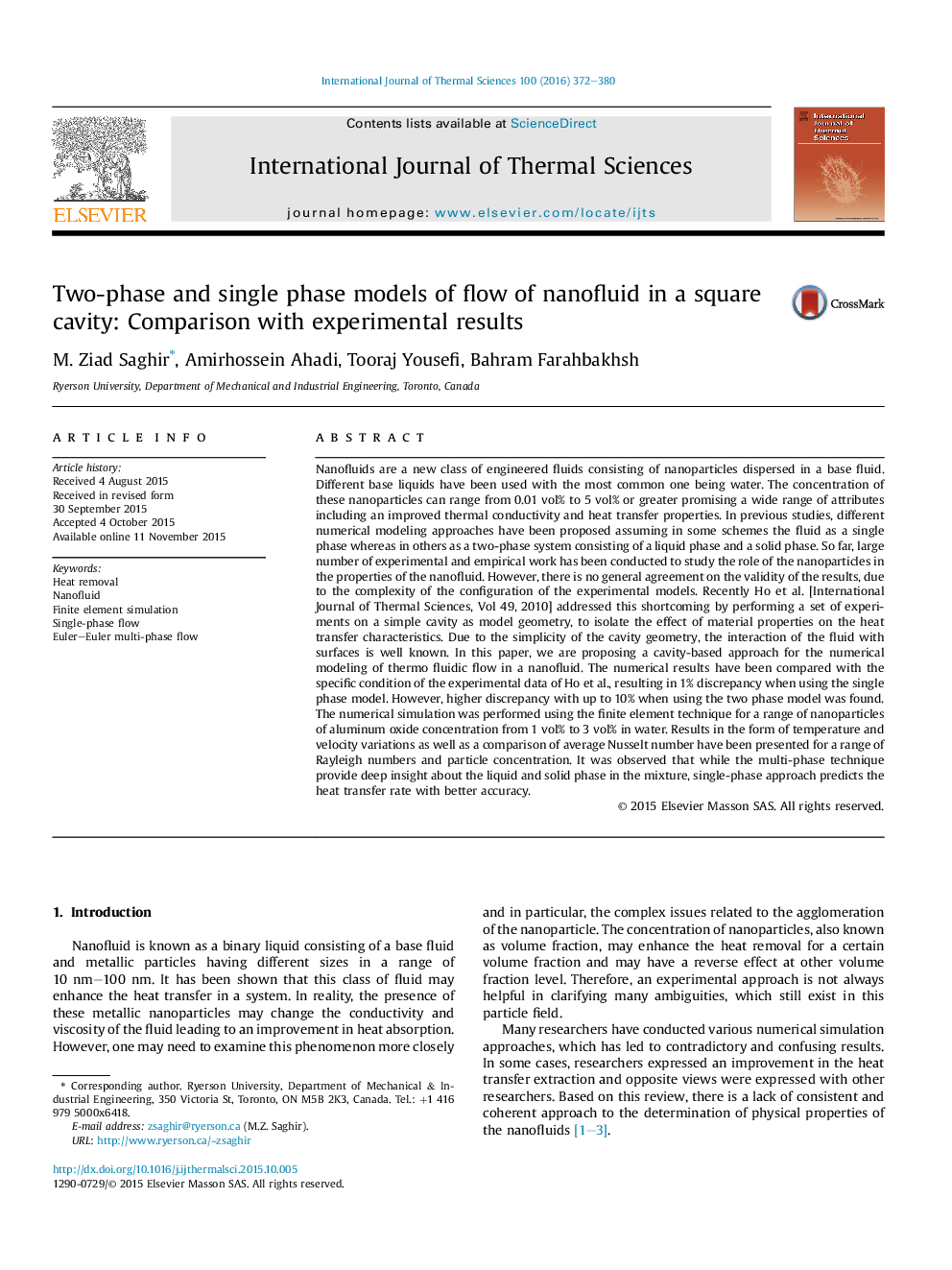| Article ID | Journal | Published Year | Pages | File Type |
|---|---|---|---|---|
| 669099 | International Journal of Thermal Sciences | 2016 | 9 Pages |
Abstract
Nanofluids are a new class of engineered fluids consisting of nanoparticles dispersed in a base fluid. Different base liquids have been used with the most common one being water. The concentration of these nanoparticles can range from 0.01 vol% to 5 vol% or greater promising a wide range of attributes including an improved thermal conductivity and heat transfer properties. In previous studies, different numerical modeling approaches have been proposed assuming in some schemes the fluid as a single phase whereas in others as a two-phase system consisting of a liquid phase and a solid phase. So far, large number of experimental and empirical work has been conducted to study the role of the nanoparticles in the properties of the nanofluid. However, there is no general agreement on the validity of the results, due to the complexity of the configuration of the experimental models. Recently Ho et al. [International Journal of Thermal Sciences, Vol 49, 2010] addressed this shortcoming by performing a set of experiments on a simple cavity as model geometry, to isolate the effect of material properties on the heat transfer characteristics. Due to the simplicity of the cavity geometry, the interaction of the fluid with surfaces is well known. In this paper, we are proposing a cavity-based approach for the numerical modeling of thermo fluidic flow in a nanofluid. The numerical results have been compared with the specific condition of the experimental data of Ho et al., resulting in 1% discrepancy when using the single phase model. However, higher discrepancy with up to 10% when using the two phase model was found. The numerical simulation was performed using the finite element technique for a range of nanoparticles of aluminum oxide concentration from 1 vol% to 3 vol% in water. Results in the form of temperature and velocity variations as well as a comparison of average Nusselt number have been presented for a range of Rayleigh numbers and particle concentration. It was observed that while the multi-phase technique provide deep insight about the liquid and solid phase in the mixture, single-phase approach predicts the heat transfer rate with better accuracy.
Related Topics
Physical Sciences and Engineering
Chemical Engineering
Fluid Flow and Transfer Processes
Authors
M. Ziad Saghir, Amirhossein Ahadi, Tooraj Yousefi, Bahram Farahbakhsh,
